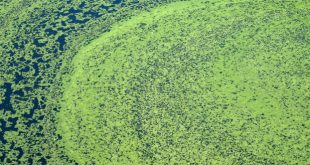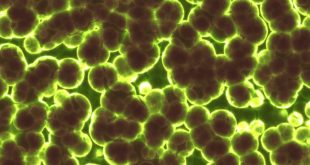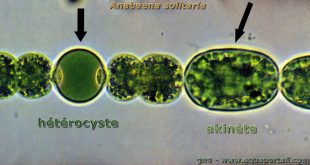Phycology or algology is the study of algae. The word ‘Phycology’ is derived from the Greek word ‘Phykos’ meaning seaweed. The algae are thallophytes (plants lacking roots, stems and leaves) that have chlorophyll as their primary photosynthetic pigment and lack a sterile covering of cells around their reproductive cells or …
Read More »Takhtajan’s System of Classification
Present-day Armenian-born botanist & systematist Armen Leonovich Takhtajan (1910-2009) was one of the most influential figures of 20th century in the field of plant evolution, systematics, and biogeography. His other interests included morphology of flowering plants, paleobotany, and the flora of the Caucasus (region between the Black sea & the Caspian sea). Good to know …
Read More »Anthoceros: The Hornworts
Systematic position Division: Bryophyta Class: Anthoceropsida Order: Anthocerotales Family: Anthocerotaceae Genus: Anthoceros Habit and Habitat The name ‘Anthoceros’ means ‘flower horn’ and refers to the characteristics horn-shaped saprophyte. Anthocerosis a genus of hornworts in the family Anthocerotaceae. With about 250 species, it is widely distributed in the tropical and temperate regions …
Read More »Transcription: The Mechanism of pre-mRNA Synthesis
Transcription is the synthesis of RNA molecule using one of the DNA strands as a template. It is the first step in the transfer of genetic information from genotype to phenotype. However, this process of transcription is a highly selective one i.e definite genes are transcribed only when their products …
Read More »Selaginella: Tale of spikemosses
Selaginella sp. is the sole genus of the vascular plant under the family Selaginellaceae and order Selaginellales. The member of this order has herbaceous stems that are usually without any indication of secondary thickening. Commonly known as spike mosses. Classification Division: Lycophyta Class: Ligulopsida Order: Selaginellales Family: Selaginellaceae Genus: Selaginella …
Read More »Friendly Behaviour Of Bacteria
When we heard about bacteria the first thing that came to our mind is that it must be harmful for us. And it’s very common because the word”bacteria” generally indicates some sort of disease and is likely to repulse and scare we off. Scientists estimate that only 1-10% of total …
Read More »Heterocyst: A Botanical Enigma
Imagine being a very special sibling, having some unique features, acting in a good and interestingly weird way unlike others – feeling important already, right? Heterocyst is such a sibling of other algal cells which altogether make a filamentous structure of the algae. Whereas the other cells perform the function …
Read More »Study Botany in USA: Steps to Follow
প্রথমেই ক্ষমা চেয়ে নিচ্ছি আমার সেই সব জুনিয়র এর কাছে যারা কিনা আমাকে প্রায়ই নক দেয় এবং অনেক সময় হয়তো আমার পক্ষে ধৈর্য রেখে সবার প্রশ্নের উত্তর দেয়া সম্ভব হয় না। একে আমি নিজে introvert, নতুন মানুষের সাথে অনেক ক্ষণ কথা বলা এমনিতেই একটু কষ্টকর, তার উপরে বাবা মা সবাইকে …
Read More »Divisions: Euglenophyta, Phaeophyta, Chrysophyta
Algae is an extremely diverse group of organisms that make up the lower phylogenetic echelons of the plant kingdom. A precise definition of this group is elusive and they share many obvious characteristics with higher land plants, whereas their distinguishing features from other plant groups are varied and more subtle …
Read More »Difference Between: Part One (BOT: 308)
This part of the series named ‘Difference Between’ contains the difference between the following topics of the course ‘The Principles of Crop Improvement’. From syllabus Topic 1: Self incompatibility and cross incompatibility Protandry and Protogyny Self incompatibility (SI) and Coss incompatibility (CI) Gametophytic SI and Sporophytic SI Self incompatibility and …
Read More » Plantlet The Blogging Platform of Department of Botany, University of Dhaka
Plantlet The Blogging Platform of Department of Botany, University of Dhaka









